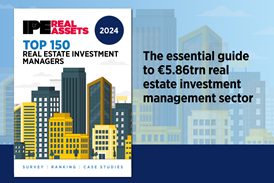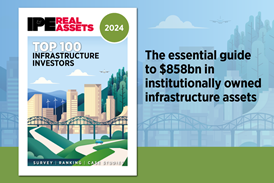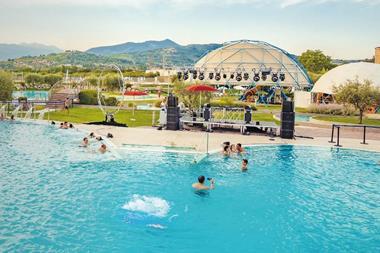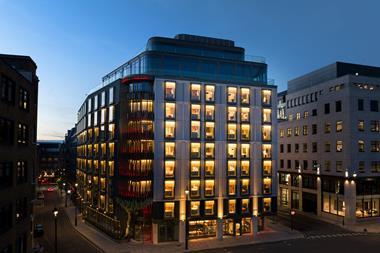Thank goodness I packed a pair of long pants and sturdy boots for this edition of Mipim.
Thank goodness I packed a pair of long pants and sturdy boots for this edition of Mipim.
Mipim this year was memorable for some of the wrong reasons. Wednesday, for example, was simply miserable on the Boulevard de la Croisette where the pouring rain forced some of us to outstay our welcome in one of the warm and dry pavilions along the promenade. I was lucky with both my watering hole and the company. Whole herds of delegates were driven into the Palais des Festivals to escape the rain. As regular Mipim-goers know, the ‘bunker’ in the basement of the Palais can be a depressing place even at the best of times.
Fortunately the sun came out again on Thursday, but it did little to dispel the general mood of unease that was palpable in the beach pavilions, hotels and yachts that I visited during my annual reality check of the international real estate community in Cannes. Even level-headed real estate veterans like Barbara Knoflach, CEO of BNP Paribas REIM, seemed affected by the unreliable weather. ‘It feels as if the weather reflects the current mood,’ she said during an interview while the sun did its best to shine through the plastic roof of her company’s pavilion on the beach. ‘We’ve had a lot of sunshine this week, but also rain and cold and everything in between. It all feels a bit hazy, as if we don’t know what’s going to happen next.’
Geopolitical and macro-economic worries
Concerns about the geopolitical environment figured prominently during conversations with the good and the great at Mipim this year. The threat of a Brexit in the UK, Donald Trump’s candidacy for president in the US, the low oil price, the economic slowdown in China, the crisis in the Middle East, and the ongoing refugee problem in Europe - the same worries kept reappearing again and again. But there was also agreement that these pressures combined with an extended period of quantitative easing in Europe and record-low interest rates spell good news for hard assets like real estate. Ric Lewis, CEO at Tristan Capital Partners, put it this way: ‘No other home compares favourably.’
At the same time, there are signs that traditional real estate assets are being swamped by the enormous wave of global capital currently targeting the sector. According to a new capital raising survey published by INREV, the European association for non-listed real estate, and its Asian and US peers ANREV and NCREIF, a new record of €124 bn of fresh capital was raised for non-listed real estate in 2015. More records may be broken in the coming year as the volume of dry powder continues to accumulate. During a panel discussion at the Carlton hotel, Rainer Komenda, the head of real estate at BVK, indicated that the German pension fund giant aims to grow its allocation to real estate from 14% to 15-16%. APG’s Robert-Jan Foortse likewise declared an ongoing commitment to real estate at the Dutch pension fund.
These European pension fund heavyweights may have been among the first in Europe to significantly increase and diversify their real estate holdings outside their home countries, but they are by no means the only ones. Nordic investors are broadening their footprint in Europe through funds and alternative structures and institutional investors in France and Italy are finally making the move as well, Knoflach reported.
Chinese slowdown?
From beyond Europe, Korean heavyweights are now becoming increasingly serious about investing in real estate on the Continent and the Japanese may finally be on their way following sightings in London. And despite concerns about a slowdown in appetite from China, the China desk of Cushman & Wakefield is as busy as ever, according to Jan Willem Bastijn, head of EMEA capital markets. Indeed, Anbang’s $13 bn bid earlier this week for US hotel group Starwood suggests not only that the Chinese are still in the game, but that they are as ambitious and aggressive as ever.
Back in Europe, the likes of CBRE are forecasting that a chunky 48% of investors active in the European arena intend to increase their acquisition volumes in 2016, based on the results of a recent survey. Including those investors who expect their purchasing activity will remain on a par with 2015, the figure rises to 85%. ‘This result, taken alongside similar figures for investors’ selling intentions, indicates that we are set for another year of strong investment activity,' commented Jonathan Hull, managing director of investment properties, EMEA at CBRE.
Global bull run set to continue
While some advisors are cautiously predicting that 2015 may be the peak of the current cycle in Europe, globally the bull run is set to continue for a few years to come, according to JLL. The ageing population in all parts of the world will drive real estate transaction volumes beyond $1 tln (€900 bn) globally by 2020, up from $700 bn in 2015, according to a new report released by the adviser this week.
As more investors pile into real estate, fund managers will no doubt become more creative and find new ways to make money from the asset class. Insurers like AXA and Allianz have done just that by tapping the debt route to real estate and both companies recently revealed that their European real estate debt platforms now stand at record levels of €11 bn and €4 bn respectively. In the battle for returns, new classes of hard assets will inevitably become respectable. AXA has already rebranded to AXA Investment Management – Real Assets to reflect the fact that its €2.7 bn alternatives platform includes assets such as hotels, healthcare, data centres and forestry.
In an investment landscape beset by low yields and volatile returns, the alternatives real estate sector has in fact emerged in recent years as a bright spot of activity and opportunity. At Mipim, JLL reported a record-breaking £15 bn in transactions in the UK alone last year. This represents around 25% of all commercial real estate investment, up from less than 10% five years ago. And judging from the crowd who turned up for a panel discussion on student housing moderated by PropertyEU at the JLL Marquis in Cannes on Thursday, appetite for new avenues to achieve direct real estate exposure remains strong.
The definition of mainstream real estate investment will no doubt continue to widen in the coming years. And now for my final takeaway from this edition of Mipim: both JLL and its investment management arm LaSalle thankfully had a good supply of sturdy umbrellas at their Marquis and yacht to brave the showers between the bright spots.
Judi Seebus
Editor in Chief










